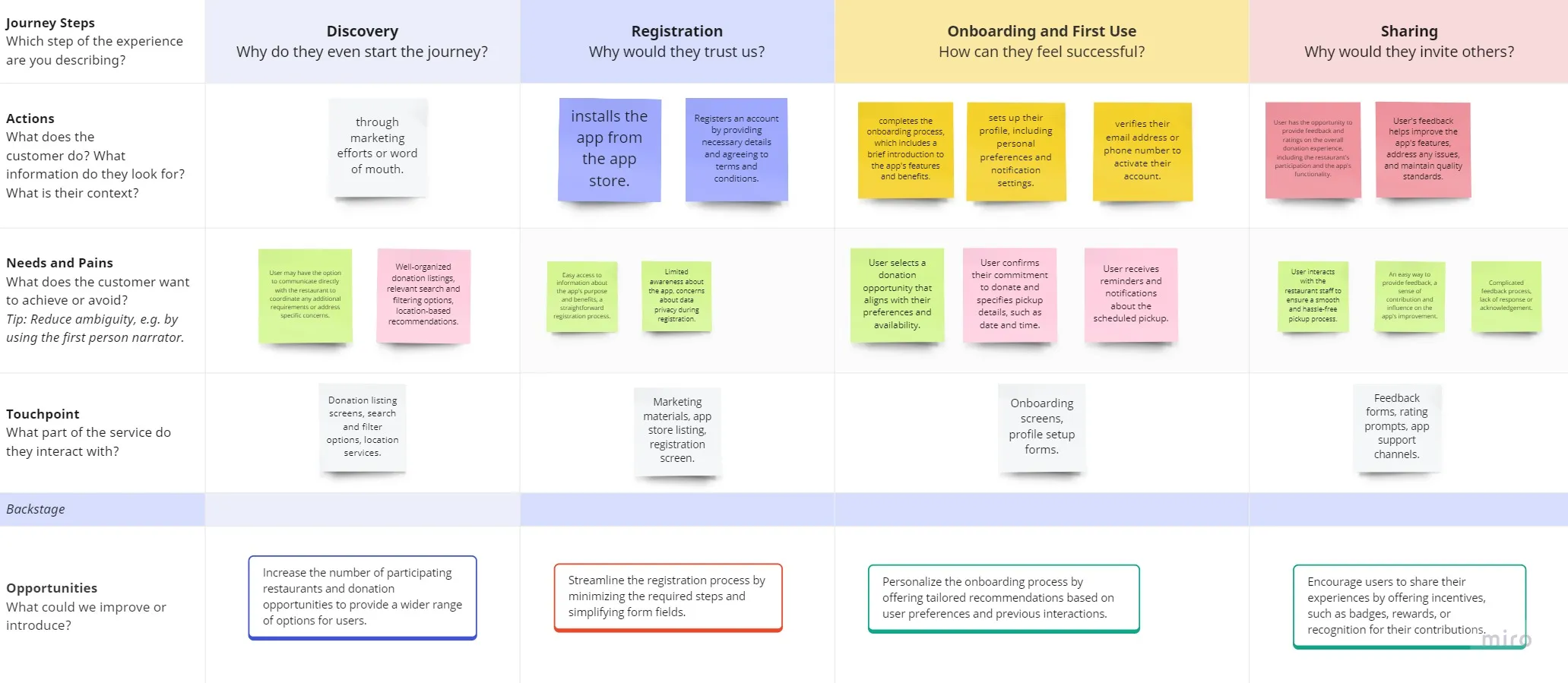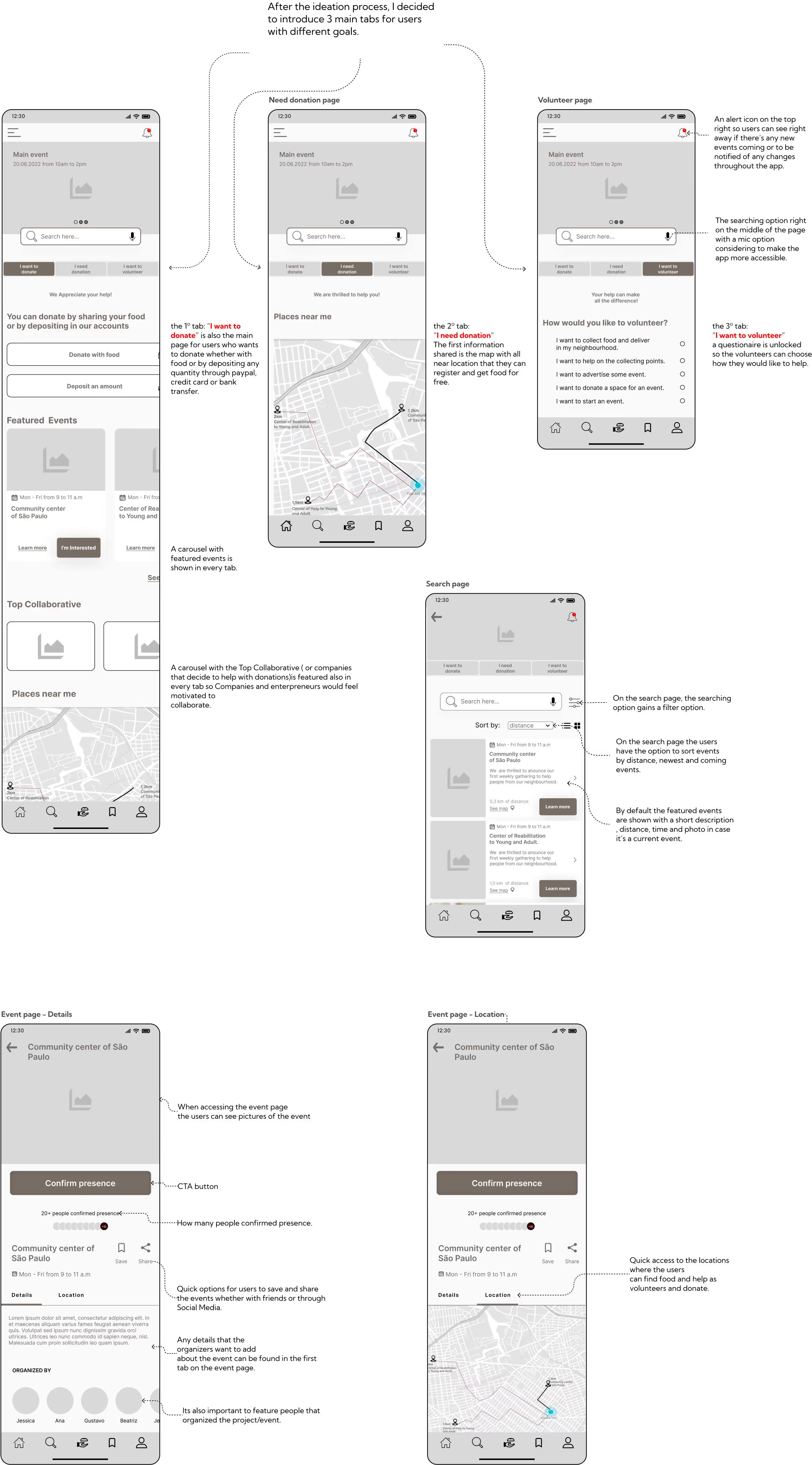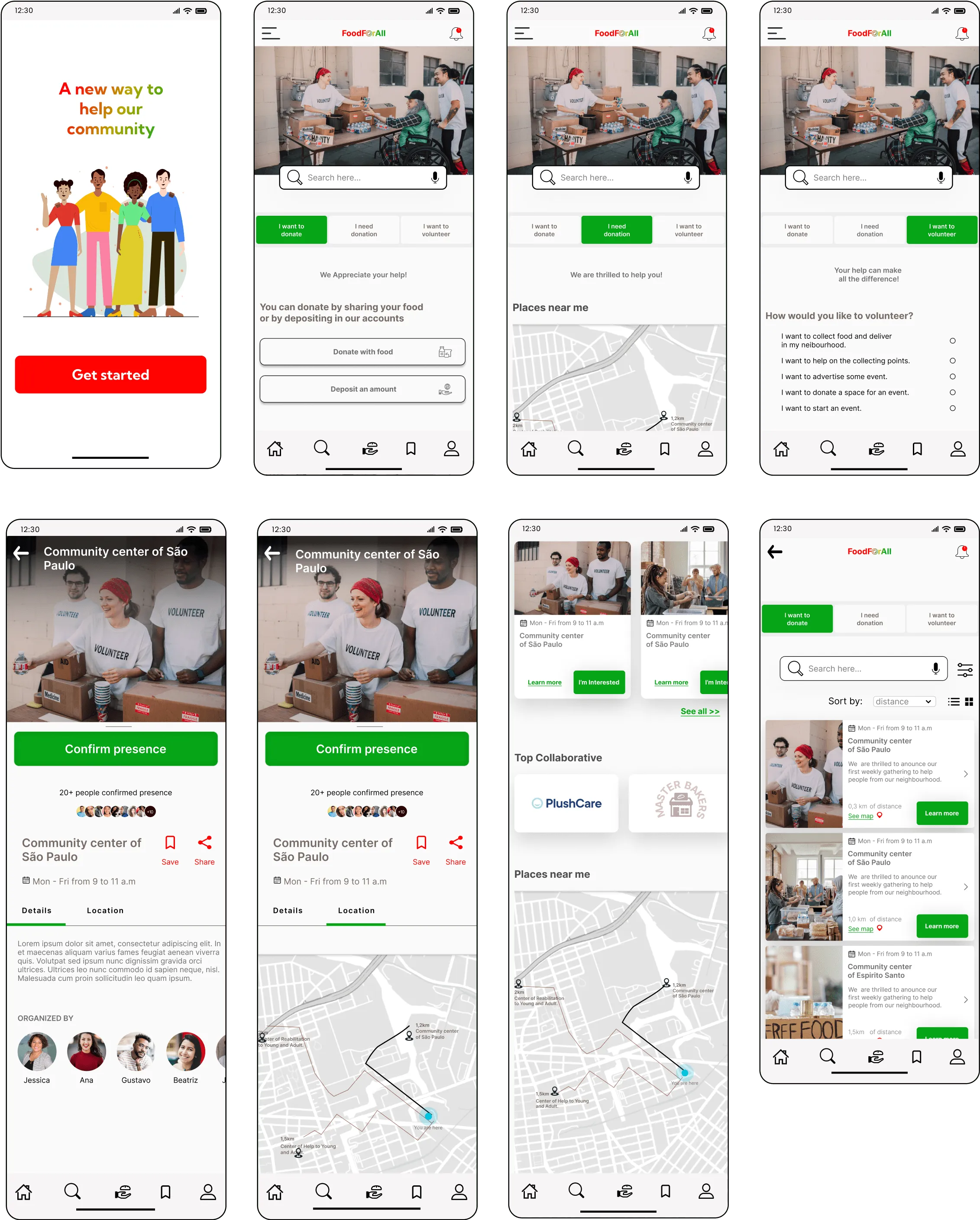

The significant amount of food wasted by restaurants and individuals in the neighborhood, which could otherwise be donated to those in need. Currently, there is a lack of efficient systems for coordinating food donations and connecting donors with recipients, leading to unnecessary food waste.
To develop an app that effectively addresses the pain points mentioned earlier, ensuring its success in facilitating food donation and reducing food waste. The key objectives for the app are:
06-2022 to 07-2022 (aprox. 4 weeks)
UI / UX designer, UX researcher
1. Logistics and Coordination::
One of the main challenges is ensuring efficient logistics and coordination between the restaurants, donors, and recipients. Coordinating pickups, drop-offs, and scheduling can be complex, especially when dealing with perishable food items that require prompt handling.
2. Food Safety and Quality Assurance:
Maintaining food safety standards is crucial when dealing with donated food. Ensuring that the donated food is fresh, safe for consumption, and properly handled requires robust quality assurance processes. Addressing concerns around liability and foodborne illnesses will be essential to gain trust from both donors and recipients.
3. Scalability and Reach:
Building a platform that can scale to accommodate a large number of restaurants, donors, and recipients is essential for the success of the app. Scaling up operations while maintaining efficiency and effectiveness can be a challenge, especially when dealing with varying levels of participation across different neighborhoods.
4. User Adoption and Behavior Change:
Encouraging restaurants and individuals to actively participate in food donation requires a change in behavior and mindset. Overcoming barriers such as the fear of liability, lack of awareness, or perceived inconvenience may pose challenges in achieving widespread adoption of the app.







.avif)
.avif)
.avif)
.avif)


I believe the impact for such important project shouldbe measured throught test after test within many diferentusers and backgrounds.“It’s safe to say that if that kind of help would become ourdaily priority, things would be much easier and pleasantfor our mind and spirit” quoted by one of the usability testparticipants. And I totally agree.
I learned that a huge part of the population stillhave food insecurity everday and that great part ofthe waste of food isn’t just from big companies andrestaurants or retails, but from ordinary families. Whichcan be changed little by little through community servicesand people willing to help and the change starts withinour own communities or the next one. There’s alwayssomeone urging for help, but they are not always willingto sick for it. So with an “easy” start such as the app providesthe users with food insecurity can start looking for helpnearby.